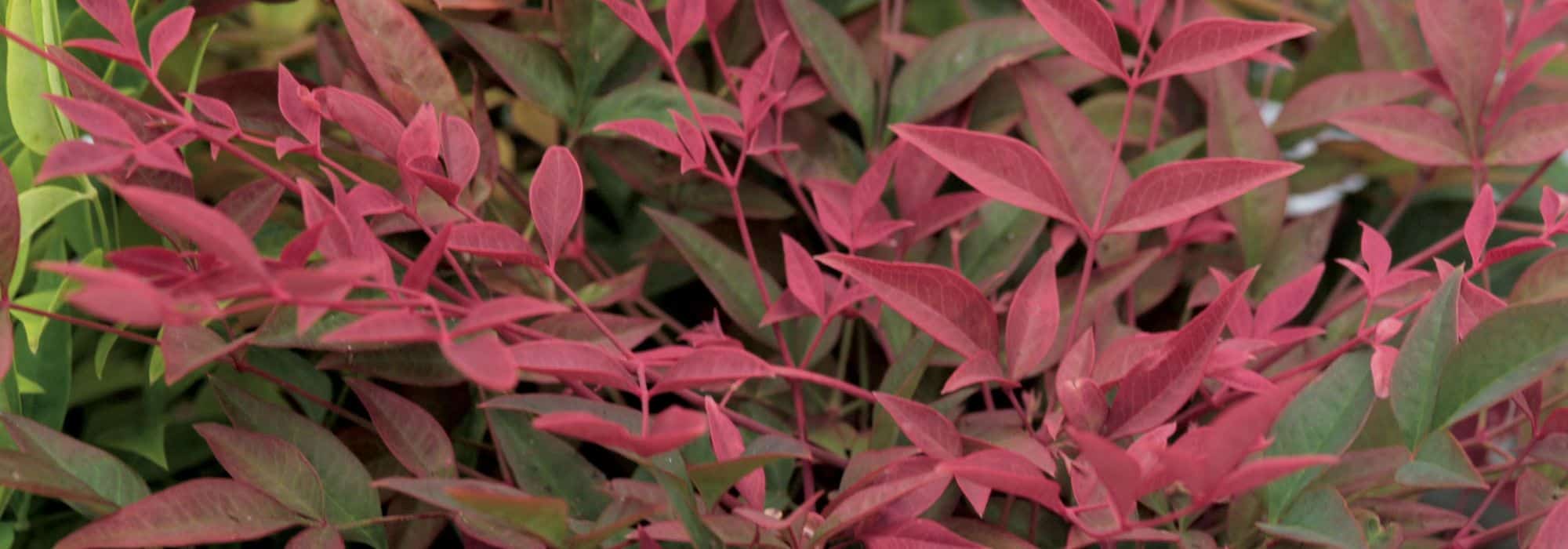
Which Nandina or Sacred bamboo to choose for your garden or patio?
The guide to choosing the right one
Contents
The Nandina, also known as sacred bamboo, is a prized bush for its changing foliage, rounded silhouette and ease of cultivation. With its evergreen leaves, it has a rightful place in a modern or natural garden. Whether planted as a standalone feature, in a low hedge or in a pot, it adds a graphic and colourful touch throughout the year. But with so many varieties available, how do you choose the right Nandina? Discover our tips for making your choice, based on your preferences and environment.
Choosing a Nandina domestica based on foliage colour
Depending on the variety, Nandina foliage offers a varied palette of colours, evolving through the seasons: from bright green to autumnal red hues, including variegated leaves. Choose according to your aesthetic preferences!
Foliage Turning Red in Autumn
What makes Nandina famous are its flamboyant autumnal colours. These changing tones can be found in ‘Fire Power’: its blue-green summer foliage transforms into deep red in autumn and winter. Perfect for adding a splash of colour during the colder months.
With its dense, rounded habit, ‘Gulf Stream’ offers a beautiful colour variation. Its young purple-pink foliage in spring turns bronze-green in summer, finishing in orange-red by autumn. Note that these varieties also produce white flowering in summer, followed by bright red decorative berries.
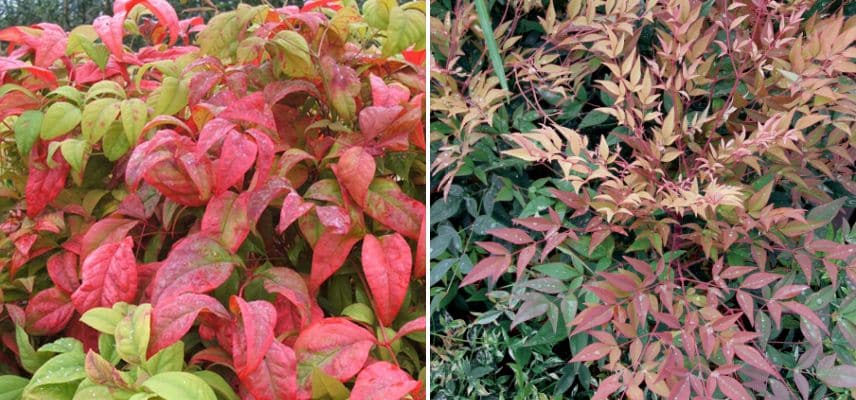
Nandina ‘Fire Power’ and ‘Gulf Stream’
Variegated Foliage
Variegated Nandinas bring originality and contrast to flowerbeds or pot compositions. Among them, we find ‘Twilight’, appreciated for its green foliage variegated with white and even soft pink in spring.
‘Pretty Flamingo’, a more compact variety, also charms with its beautifully variegated green and cream foliage, featuring tender pink shoots in spring, which turn intense red as the cold weather arrives.
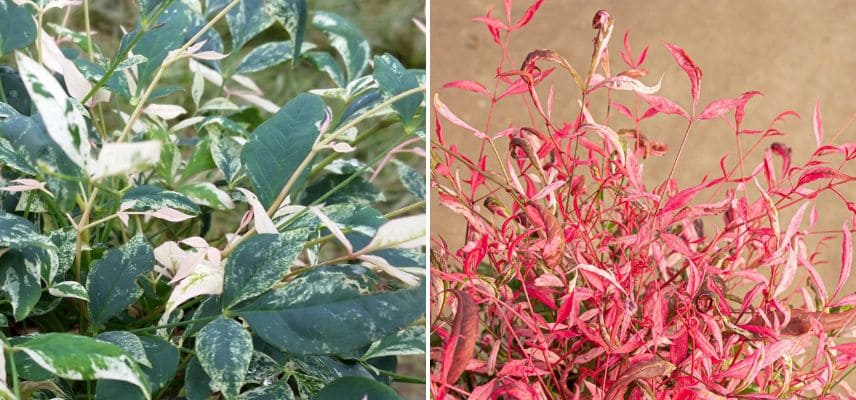
Nandina ‘Twilight’ and ‘Pretty Flamingo’
Bright Green Foliage
No red here, but golden-green, luminous tones, bringing freshness and brightness to shady corners of a garden or terrace. Among them is ‘Lemon Lime’, which offers lemon-green foliage in spring, turning to soft green in summer. At maturity, it forms a rounded shape of about 70 cm in all directions.
‘Brightlight’ also adopts a bright green on its young foliage, leaning towards yellow in spring, but it stands out for its slightly larger size (1.50 m tall) and better cold resistance (down to -20°C). Additionally, it produces white flowering in summer.
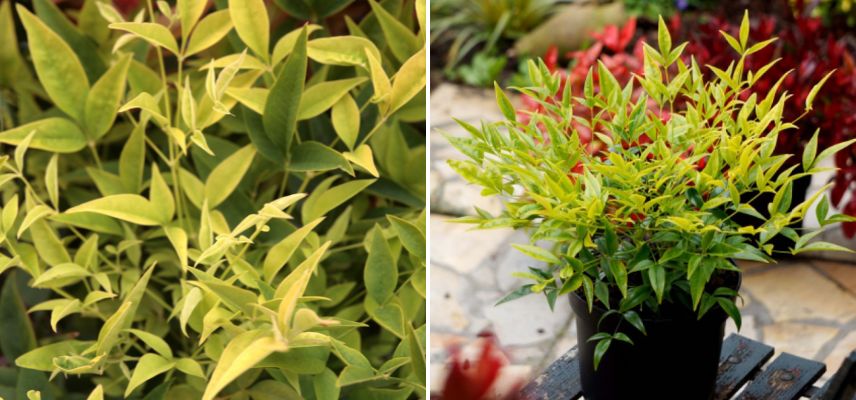
Nandina ‘Lemon Lime’ and ‘Brightlight’
Unusual Foliage
Less conventional, some varieties of Nandina stand out with very fine foliage, more unusual, bringing real originality to the garden. This is the case with ‘Plum Passion’, with dark purple leaves from spring, which then turn green in summer before returning to plum red in autumn. With its upright habit reaching 1.20 m tall, it offers beautiful verticality in flowerbeds and strong visual interest throughout the year.
Slightly smaller, ‘Filamentosa’ features extremely fine foliage, almost thread-like, reminiscent of ferns or true bamboo. Its young pink-orange foliage in spring becomes yellow-green in summer before taking on lovely bronze-purple tones in autumn. Very compact (about 90 cm), it fits perfectly in borders, small gardens, or even in pots on a terrace.
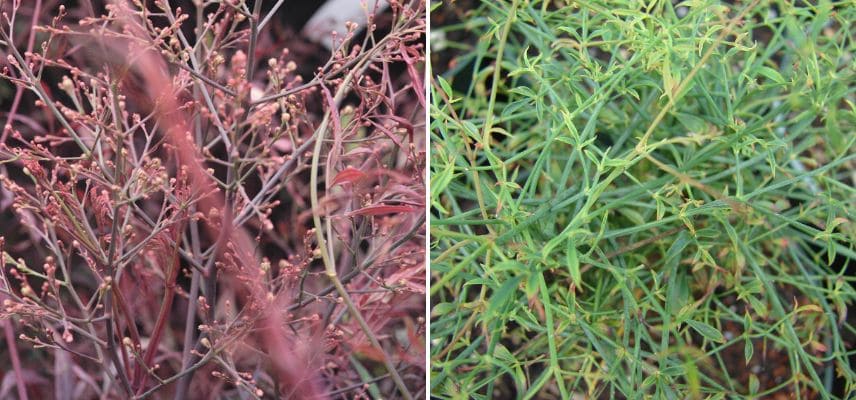
Nandina ‘Plum Passion’ and ‘Filamentosa’
Also read: Nandina domestica: A Reliable Choice Among Decorative Foliage Plants.
Read also
Growing a Nandina in a Pot: All Our TipsChoosing a Sacred Bamboo based on its pruning and use
The Nandina domestica comes in various varieties of different heights, ranging from 50 cm to 2 metres tall at ripeness, making it suitable for borders, pots, flower beds, or even low hedges. To choose the right variety, consider the space you have available and the desired effect. Also keep in mind that a nandina has fairly slow growth.
Small varieties for small gardens, pots, and borders
The compact varieties, with their modest height, often referred to as dwarf Nandinas, are perfect for small spaces. They also thrive in pots on a terrace, where they provide colourful foliage year-round without taking up too much space.
‘Fire Power’ is one of the best-known in this category: with its 60 cm in all directions, rounded habit, and highly colourful foliage, it adapts perfectly to small gardens. It’s ideal for lining pathways or in containers on a balcony.
More recent, the variety ‘Blush Pink’ doesn’t exceed 60 to 70 cm in height, but it stands out for its bright pink-red foliage from spring, retaining its beautiful colour for much of the year. Very graphic, it works well in flower beds or pots.
Not forgetting ‘Red Light’, which charms with its foliage blending bluish-green and cream tones. It takes on beautiful red hues as the cold weather arrives and in spring. Compact (around 60 cm tall and 50 cm wide), it’s perfect for borders or decorative pots on a contemporary terrace.
For luminous foliage, ‘Lemon Lime’ offers a compact habit and golden-green foliage, perfect for brightening a shady corner on a balcony or in a small urban garden.
→ Also check out our article: “Sacred Bamboo: The Most Beautiful Nandinas to Grow in Pots“.
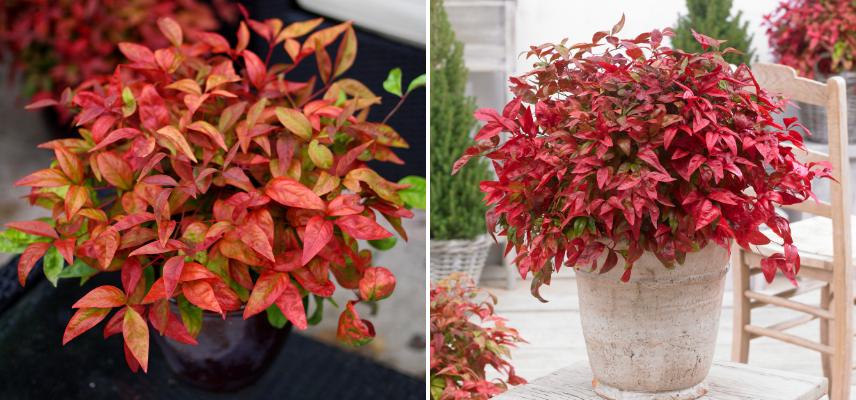
Nandina in pots
Tall varieties for standalone planting or hedges
If you’re looking to create a structural plant feature in the garden or establish a decorative hedge, opt for taller Nandina varieties. Their more upright habit helps define a flower bed or screen a view while maintaining a natural feel.
The botanical form Nandina domestica, the standard species, easily reaches 1.50 m to 2 m in height. It’s ideal as a standalone specimen or planted in a row to form a low hedge. It features finely textured, highly decorative foliage, white flowers in summer, followed by persistent red berries in winter. Its natural habit (without pruning) is airier and less dense than other varieties.
‘Richmond’ is characterised by vigorous growth and an upright habit, reaching around 1.50 m tall. Its glossy green foliage turns stunning red shades in autumn, and it produces abundant berries, with clusters of red berries persisting well into winter.
‘Magical Sunrise’ stands out for its coppery-orange young shoots, maturing to dark green before turning deep red-purple in autumn. This compact, upright variety is slightly smaller at 1.20 m tall but offers excellent density, ideal as a standalone or in flower beds. And if you like originality, consider ‘Twilight’, with similar dimensions but cream-variegated green foliage.
Finally, ‘Brightlight’, which grows up to 1.50 m, can serve as an intermediate plant in a flower bed, bridging low-growing and taller bushes. Its golden foliage brightens shady corners of the garden and offers summer flowering.
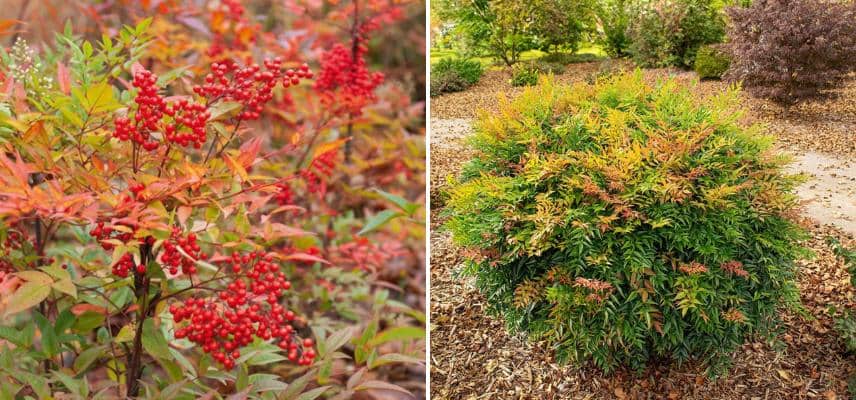
Nandina domestica and ‘Magical Sunrise’
- Subscribe!
- Contents
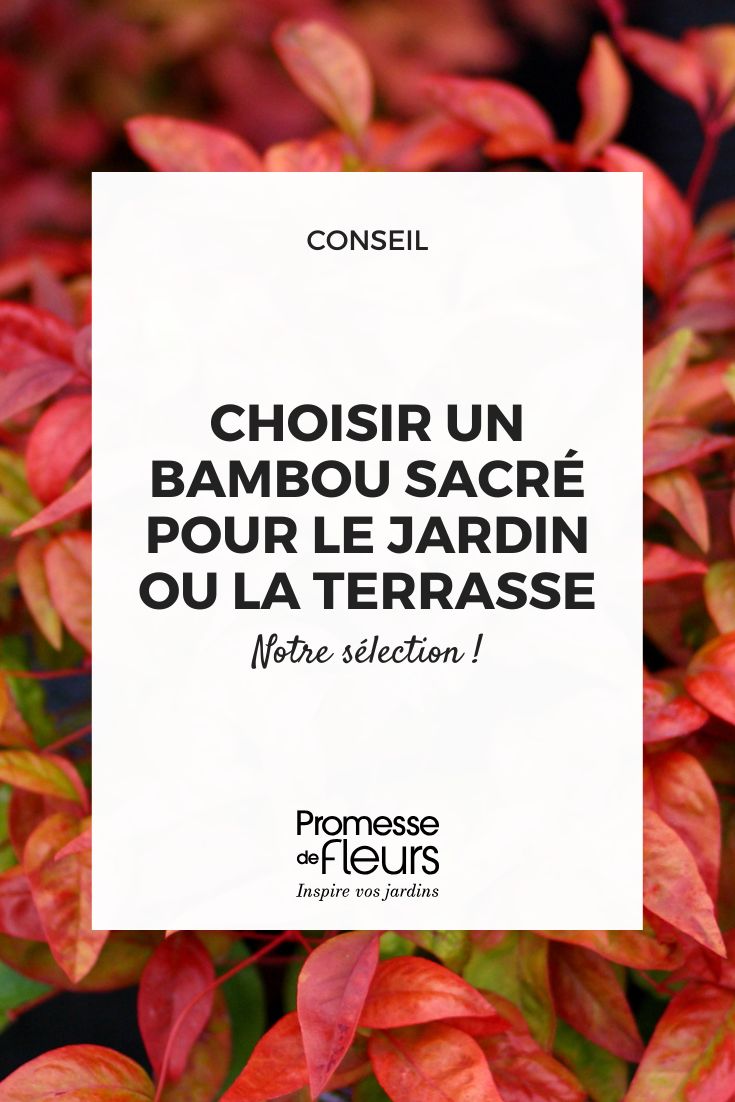































Comments